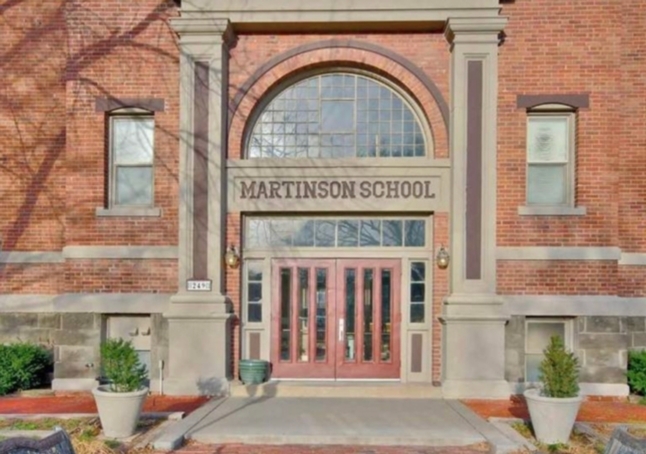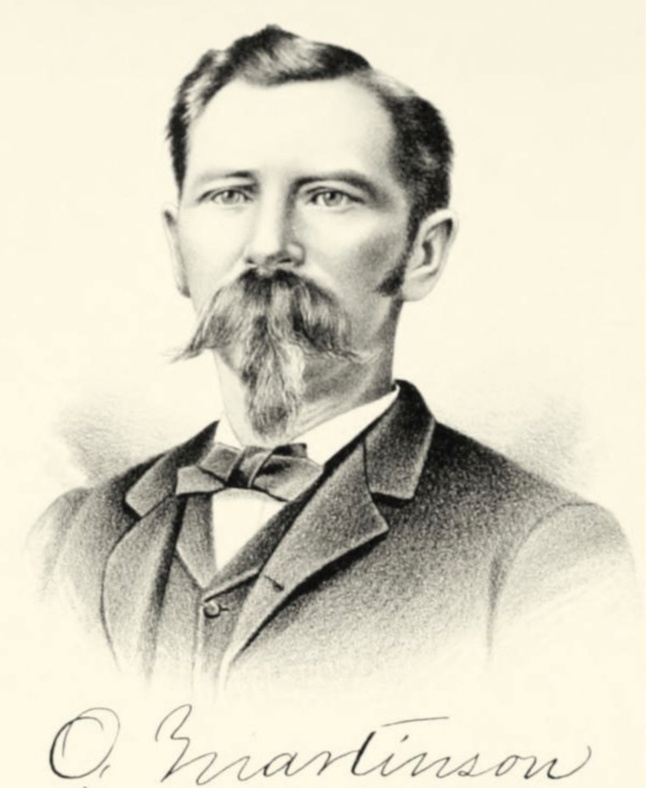Class of 1970
Martinson Elementary
Photos contributed by John David WilsonPhotos from Your Days
at
Martinson Elementary School
See photo galleries below
Add your own photos by clicking on
"Create Your Own Photo Gallery Here"


The year was 1870 and Wichita was a little more then a frontier trading village. A drugstore and a saloon were the only businesses west of the river and there were few homes. A toll bridge crossed the Arkansas River, providing access to the west side. But, the growth west of the river was soon to come, and a Swedish immigrant by the name of Ola Otto Martinson would be involved in the growth of what is now know as the Delano district.
Otto was born in Sweden, on September 20th, 1844. He sailed here, to the states in 1866. Landing in Castle Rock New York and from there he went on to live in Chicago for a short time. Upon arriving there he immediately started the fifth grade, although he was then 22 years old, but as soon as he could speak English, he took his naturalization papers, stayed and worked there for a short time before making his move to Wichita.
In July 1870, Otto moved with a friend, a Mr Keeffer, to this small Wichita town. The men made their start by owning and operating a small flour and feed business on Main Street and then they bought interest in a bakery.
In 1871 Mr. Martinson took advantage of the offers, at that time, of government claims, and claimed 160 acres 7 miles west of Wichita along the Cowskin Creek near Central and Maize. Placing four logs in a square was called, laying a foundation and showed claim was taken. Building a sod house, he lived in this humble house long enough to "prove up." To do this he had to live there a few weeks a year for 5 years before getting title. During this time he continued to work at the bakery, going back and forth from to his claim a great deal of the time. Traveling daily through nothing but prairie land, and he was not a man who carried a pistol, and was never once attacked by Indians. After selling out his portion of the bakery in 1873 Mr Martinson spent all his time for several years on his claim, setting out trees and otherwise improving on it.
In 1876 he became very ill and was stricken with inflammatory rheumatism and was forced to move to Wichita proper in order to receive treatment. While in Wichita he met Sarah Knofflock. They soon were married, and he and his new bride moved back to the homestead and had two sons Ola Earl and William Clarence. But, in the year 1883 he again moved with his family to Wichita and they then had their youngest son, Charles Gilbert that following year.
Shortly, after this move, is when Martinson became involved in the real estate business here in Wichita. He purchased 200 acres of west Wichita land, from a Mr. Almond Dodge, exactly where the Missouri Pacific had to cross on its way to Hutchinson and Anthony. The property extended east and west of Seneca along Douglas Street. The purchase price for this land was $12,000, but he more than recovered his investments with the railroad right-of-way money. Soon after he bought this tract, he laid his land into city blocks, and he then platted it into lots. Then in 1885 had the city bring the first of his eight additions into the city of Wichita, this included the Martinson School grounds, and he named some of the streets after his family, Martinson, Clarence, Charles and Earl Street (later renamed Athenian, where the Martinson School would be, 25 years later, built and named after him). Most all of this land became housing with the first homes built in 1885.
Two years later in 1887 he built the Martinson block, located on the northwest corner of Seneca and Douglas. This was a large attractive building with 3 stories, plus a basement. This pressed brick and stone structure housed a number of offices as well as the West Side National Bank, which Martinson served as vice-president. Then a few blocks to the north of this building he built an elegant 3 1/2 story palace-like home at 313 N Seneca, one of the show places of the ambitious growing west-side community. He was successful as banker, a real estate agent, a stockholder and a director of the Street Railway Company, and continued to construct several other buildings. Martinson continued to buy more adjacent land and donated 14 acres of land for the Garfield University, later to become Friends University. He was also involved in the building of Mount Carmel Academy, and one of a group of city leaders that financed the building of the failed Wichita Watch Factory, a huge limestone structure which was located at Douglas and St Clair, that he intended would make west Wichita a 'little Switzerland.' This factory never opened its doors because they were unable to bring the sixty watchmakers into the United States due to immigration, the building was never used and later torn down and some of the limestone was used in the construction of the Catholic Church at St Marks, Kansas.
Durring the busy 1880's days of building and banking, and investing, Otto Martinson continued to farm his homestead on the Cowskin. He maintained the meadow-lands in the bends of the creek, which was used as a public picnic called " Martinson Grove ", the 4-H youngsters used it every summer for years.
Martinson lost his money in the city's economic downturn of the 1890's, he sold his home and lost his buildings. Martinson died in of heart disease in 1922 at the age of 77. At that time he was living in a small cottage at 221 N. Dodge. The bust may have robbed Otto of his money but not his pride in what he accomplished in west Wichita.
Martinson School was built in 1910 was named after this early developer, because, according to the schools 1934 program, 'The Board of Education thought it only fitting the man who had done so much to make west Wichita a thriving community, and who once had been owner of the land, should be given his name to this new elementary school building.'



